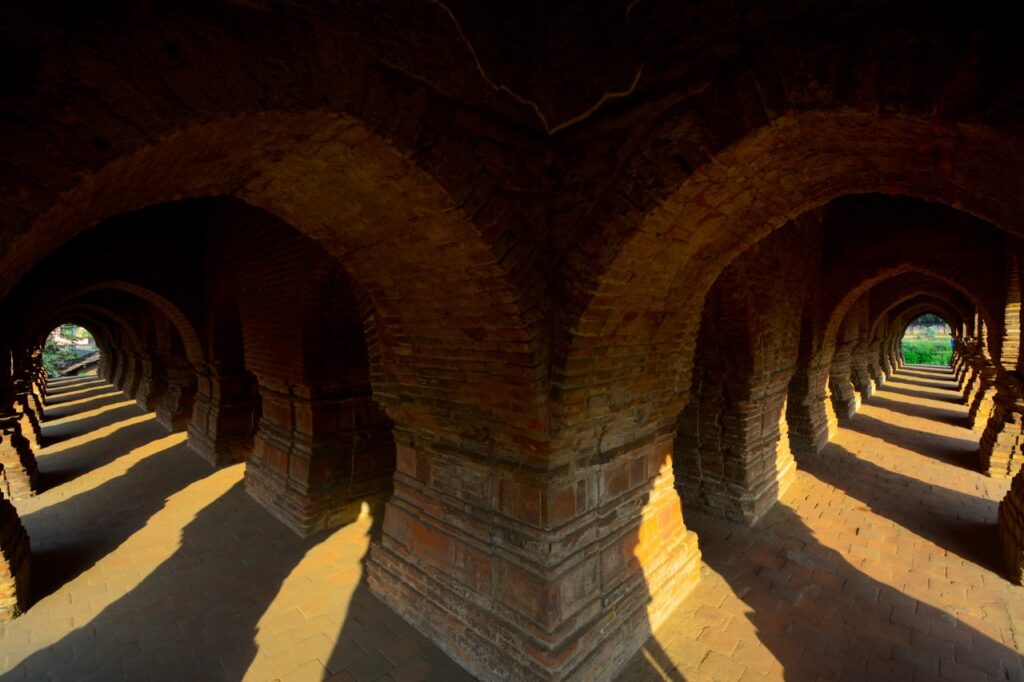
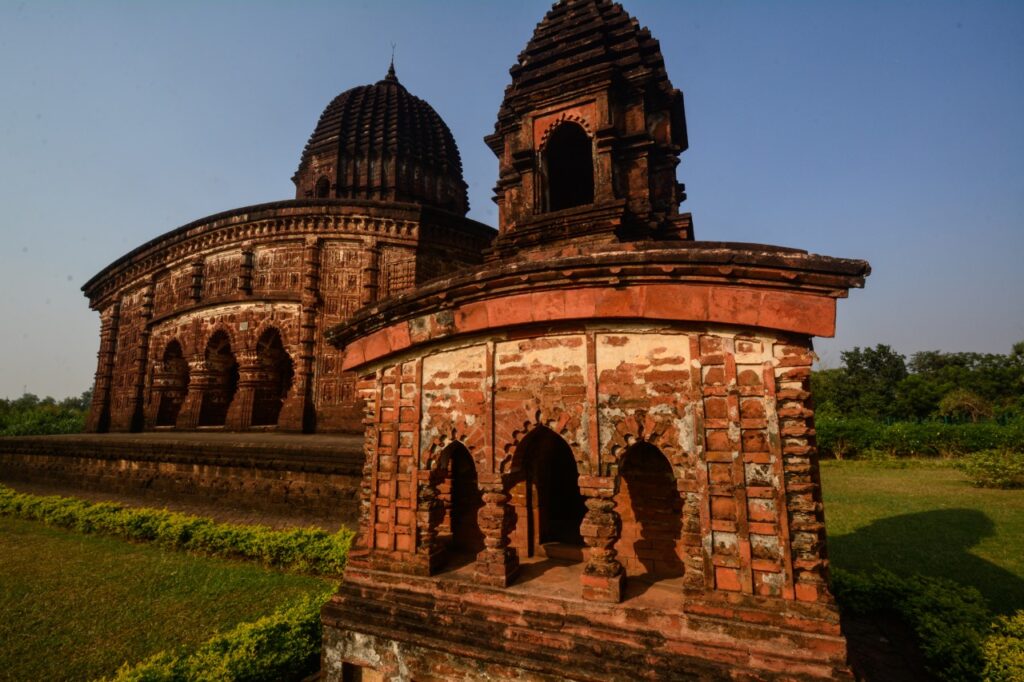
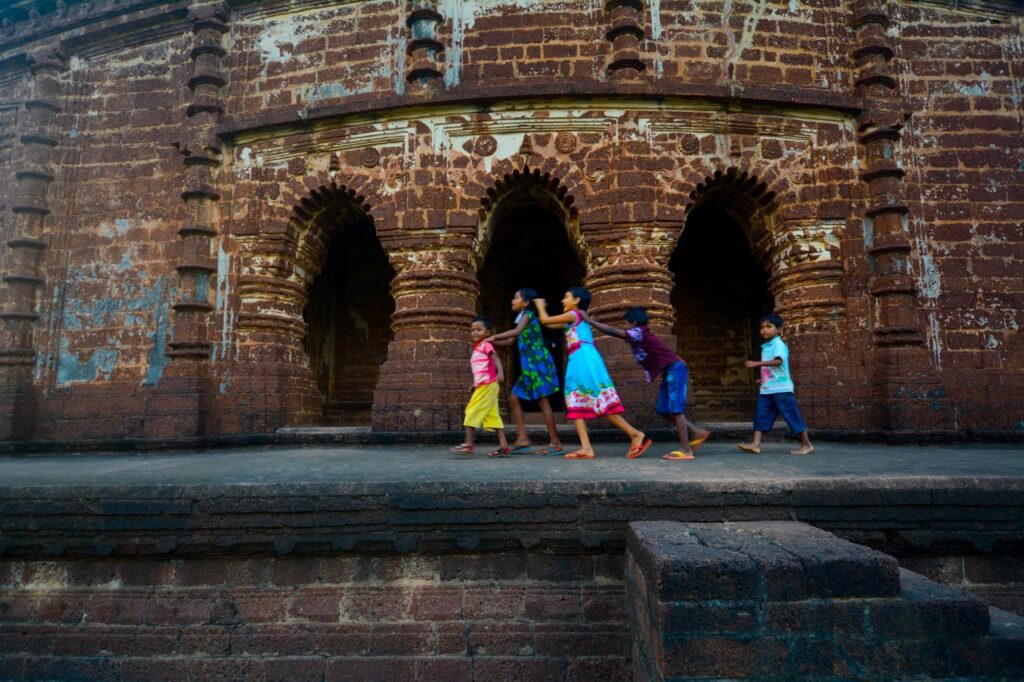
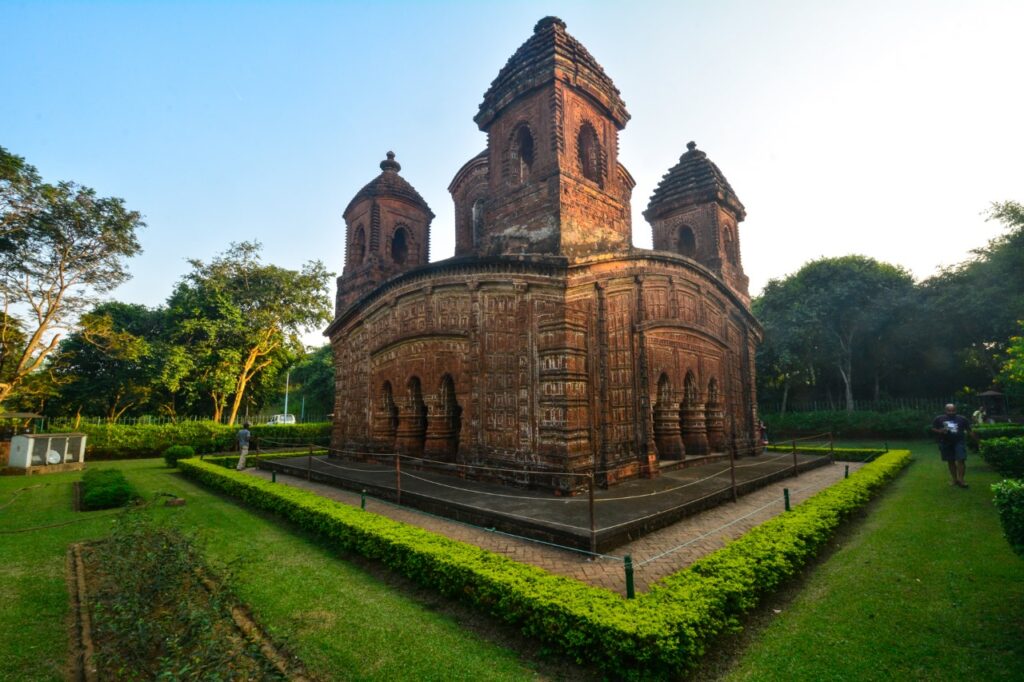
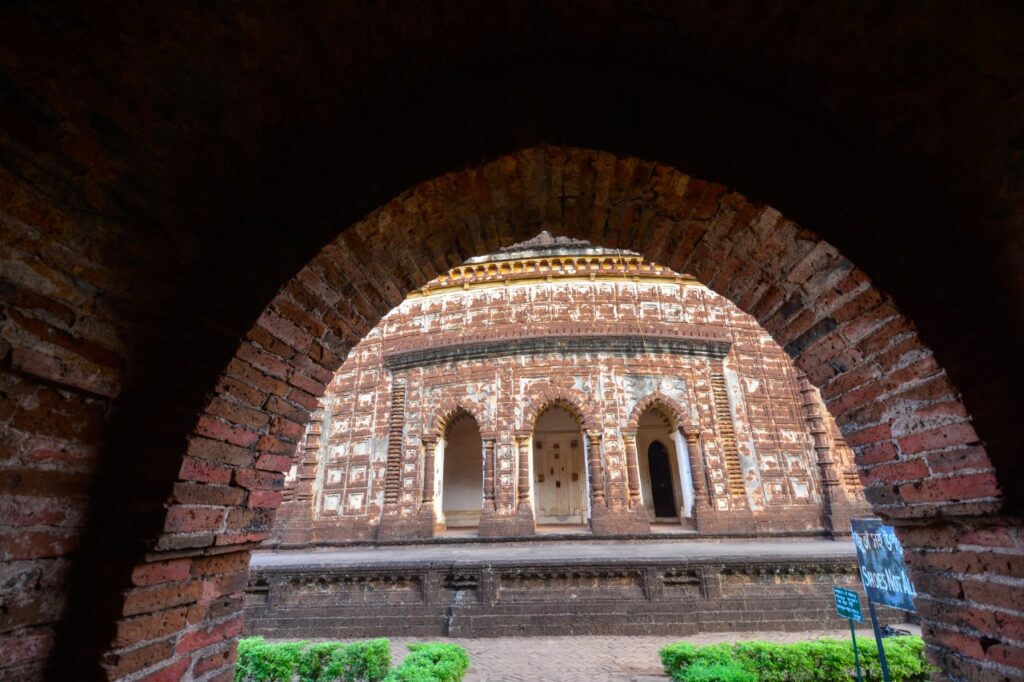

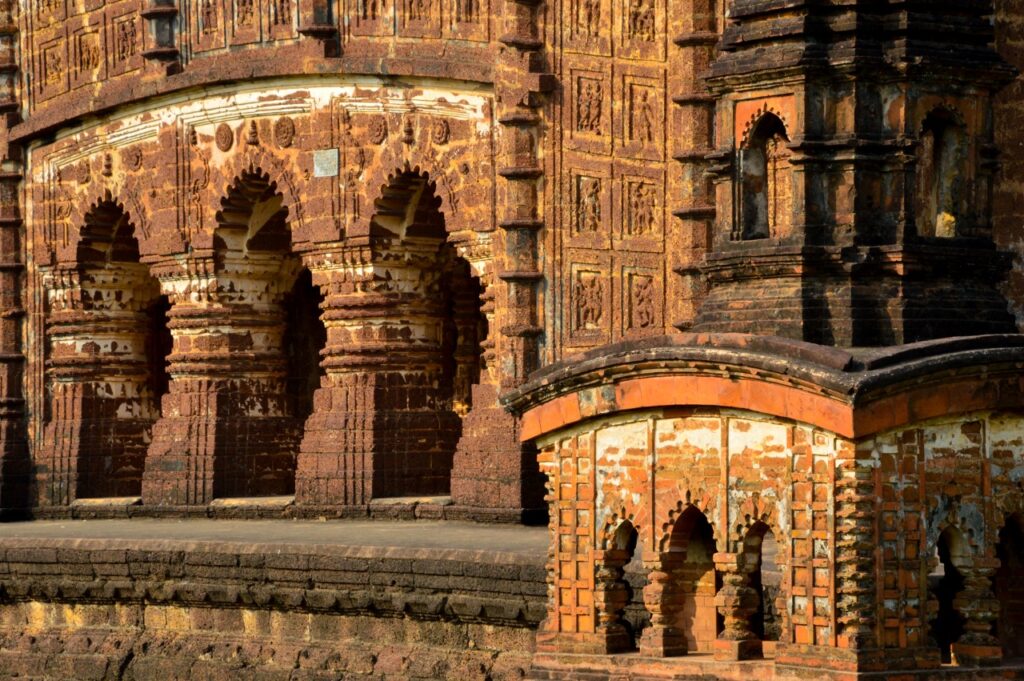
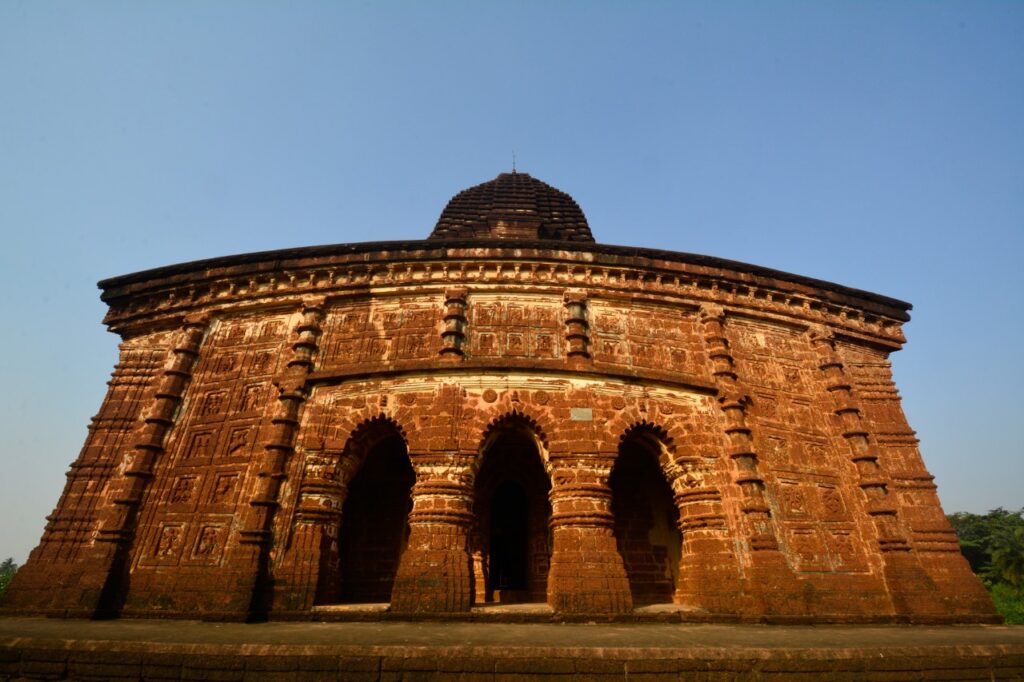
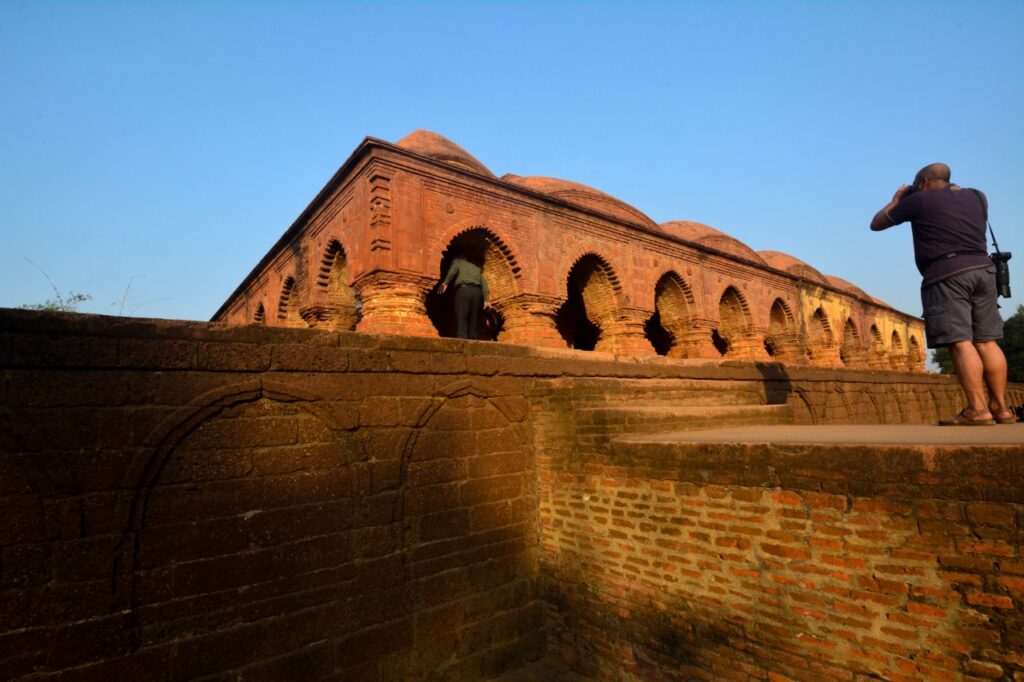
Bishnupur, situated in the Bankura district of West Bengal, stands as a testament to the rich cultural heritage and architectural brilliance. Once the capital of the Malla Kings of Mallabhum, this ancient city is renowned for its plethora of terracotta temples that reflect the deep-rooted devotion to Vaishnavism among its rulers. The Malla Kings, patrons of art, architecture, and religion, left an indelible mark through their dedication to Lord Vishnu, evident in the intricate carvings and sculptures adorning the temples. Each structure narrates numerous tales from Hindu mythology, prominently featuring the Hindu deity Lord Vishnu and his ten incarnations, famously known as Das Avatar, as well as scenes and stories from the great epics Ramayana and Mahabharata.
Central to Bishnupur’s allure are its terracotta temples, showcasing exquisite craftsmanship and detailing. These temples, built primarily between the 10th and 17th centuries, stand out for their distinctive style characterized by ornate terracotta panels that adorn their walls. Some of the temples are even older built in the architectural style of ancient India. The panels depict a wide array of subjects, from mythological episodes to scenes from everyday life during that era.
The Rasmancha, a prominent structure among them, serves as a testament to the Malla Kings’ devotion, designed specifically for the grand celebration of Dol Purnima, celebrated at the same time as Holi in West Bengal, along with Janmashtami, Jhulan, Ras Yatra or Rash festival dedicated to Lord Krishna. Jor Bangla Temple, a significant Vaishnav Temple carved in the shape of two connected bungalows was worshipped by the pilgrims for several centuries, dedicated to a form of Lord Krishna as a warrior and the saviour of the city.
Also Read: Monsoon Musings: A Symphony of Storms
Famous temples like Radha Govinda Temple, Radha Madhab Temple, and Radha Shyam Temple portrays the devotion of the Malla Kings and their subjects to Lord Krishna and Devi Radha and commemorates their eternal bonding and is dedicated to their Vrindavan Leela. Kalachand Temple, Madanmohan Temple, Muralimohan or Murli Mohan Temple, Madan Gopal Temple, Lalji Temple, Nandalal Temple, and Pancha Ratna Temple were some of the most important Vaishnav sites in ancient Bengal.
Beyond its temples, Bishnupur’s architecture reflects a blend of Hindu, Islamic, and Bengali influences, each contributing to its unique character. The city’s red laterite soil, abundantly available in the region, not only facilitated the construction of these temples but also lent them a distinctive hue that adds to their visual appeal. The intricate carvings on these temples not only depict religious themes but also serve as a historical chronicle, offering insights into the socio-cultural milieu of medieval Bengal.
Bishnupur is not merely a repository of temples but also a hub of music and handicrafts. The region is famed for its unique style of classical music, the Bishnupur Gharana, which evolved under the patronage of the Malla Kings. This musical tradition, characterized by its adherence to Dhrupad and other classical forms, continues to thrive, attracting enthusiasts and scholars alike.
Bishnupur stands as a living testament to the artistic prowess and cultural legacy of the Malla Kings. Its terracotta temples, with their intricate designs and historical significance, offer a glimpse into a bygone era of religious fervor and artistic splendor. As a center of Vaishnavite culture, music, architecture, and craftsmanship, Bishnupur continues to captivate visitors with its timeless charm and rich heritage, ensuring its place as one of India’s most culturally significant destinations. Moreover, being very close to the famous Joypur Forest in West Bengal, the city is surrounded by lush greenery, thus attracting many visitors to come and witness this ancient city every year, especially during the winter and spring.
Story by Anneysha Chatterjee
Image Courtesy: Author
Bishnupur
Atanu Paul is an ace photoartist working for 35 years in this field. He is the first Indian whose work has featured in the several collector's edition of the National Geographic as well as in their Calendar edition and in their own exhibition cover.


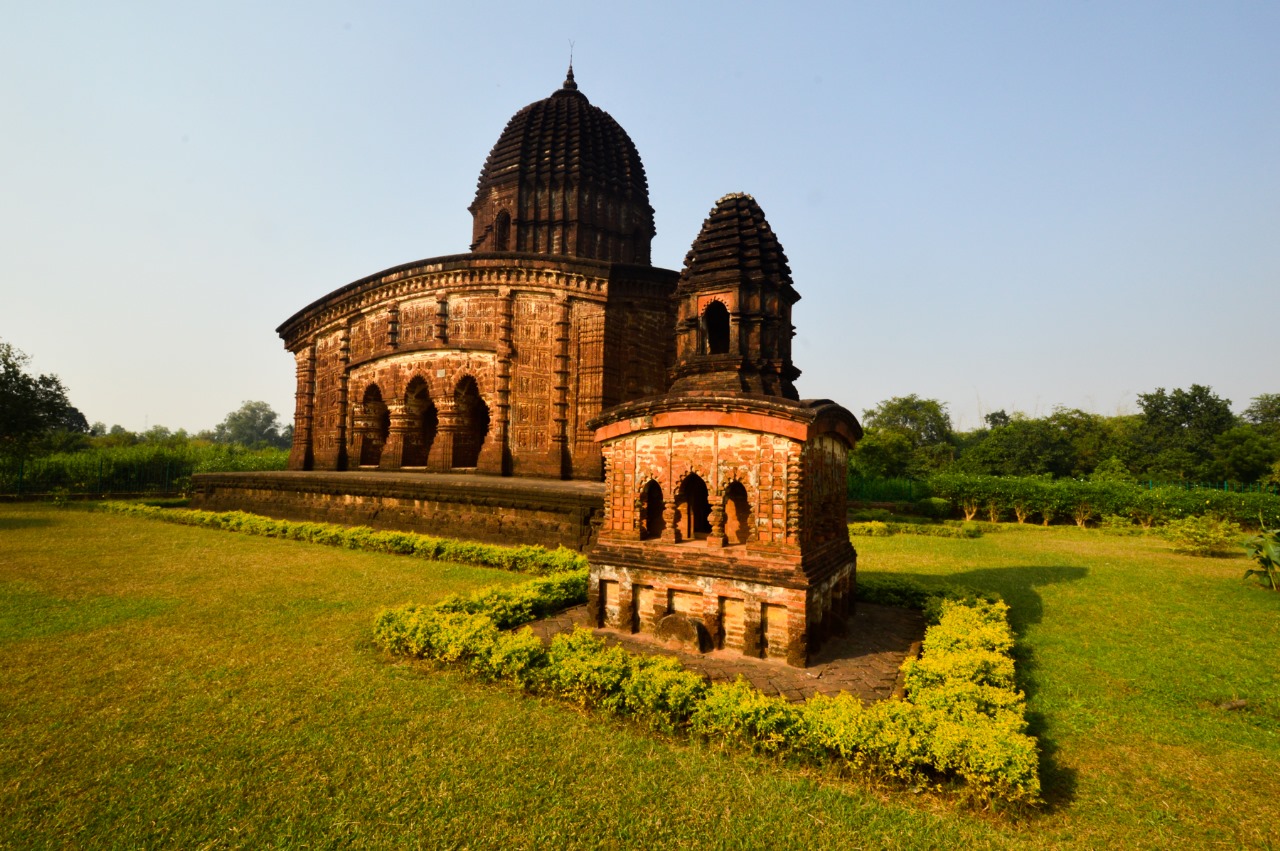


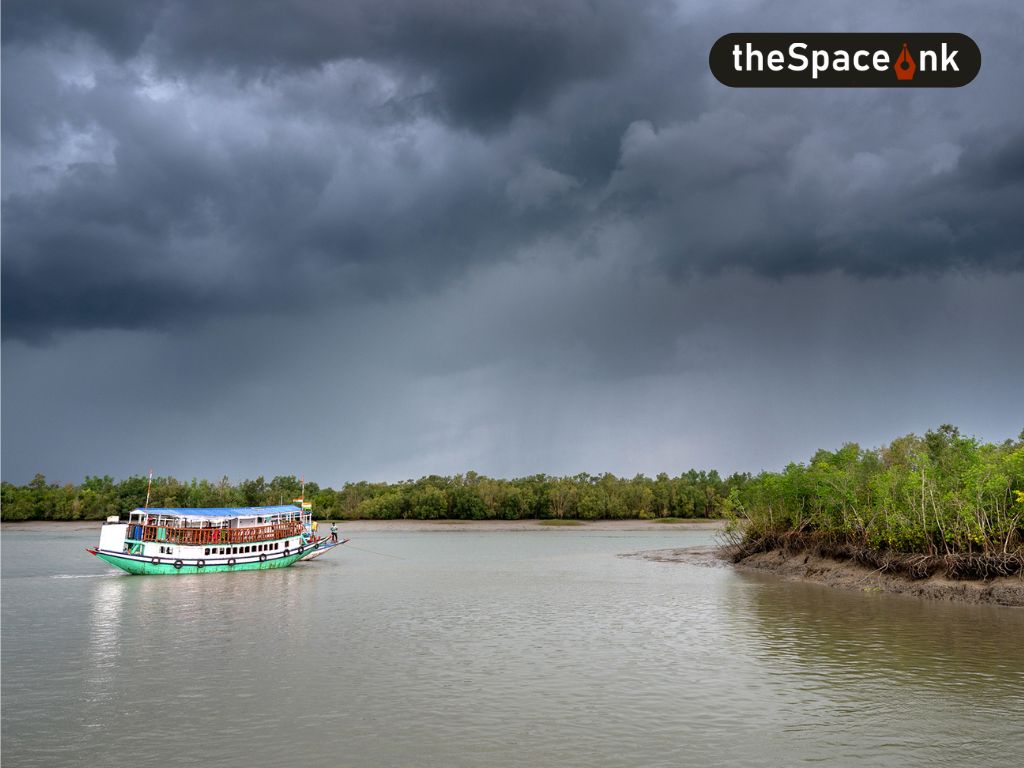
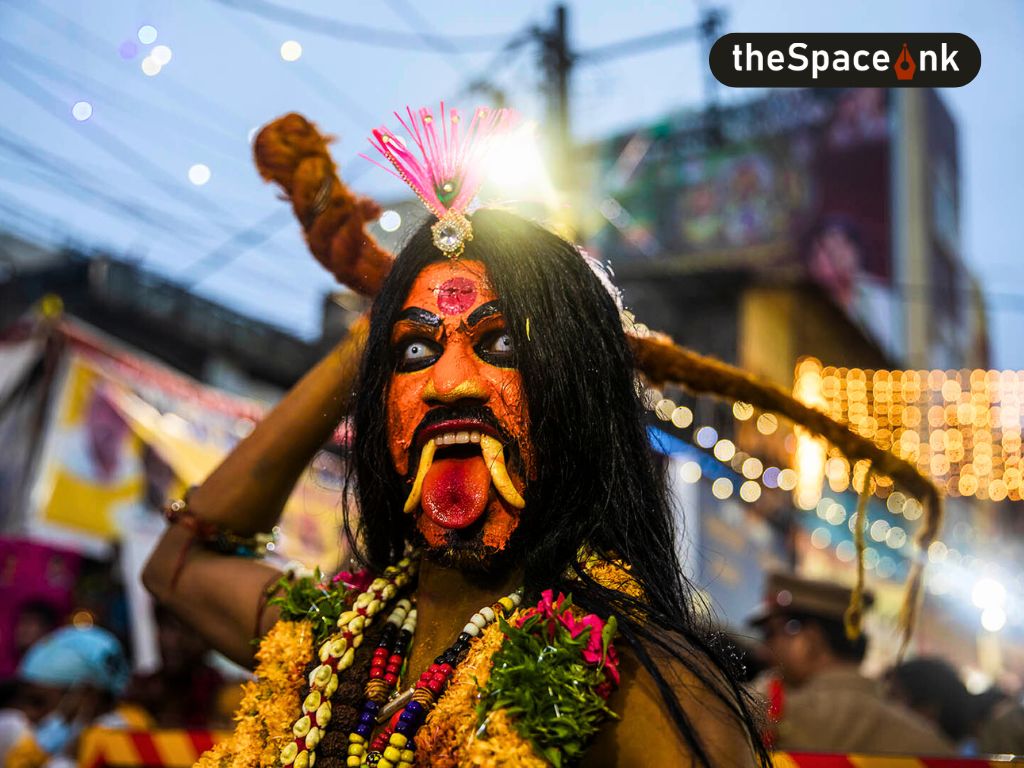

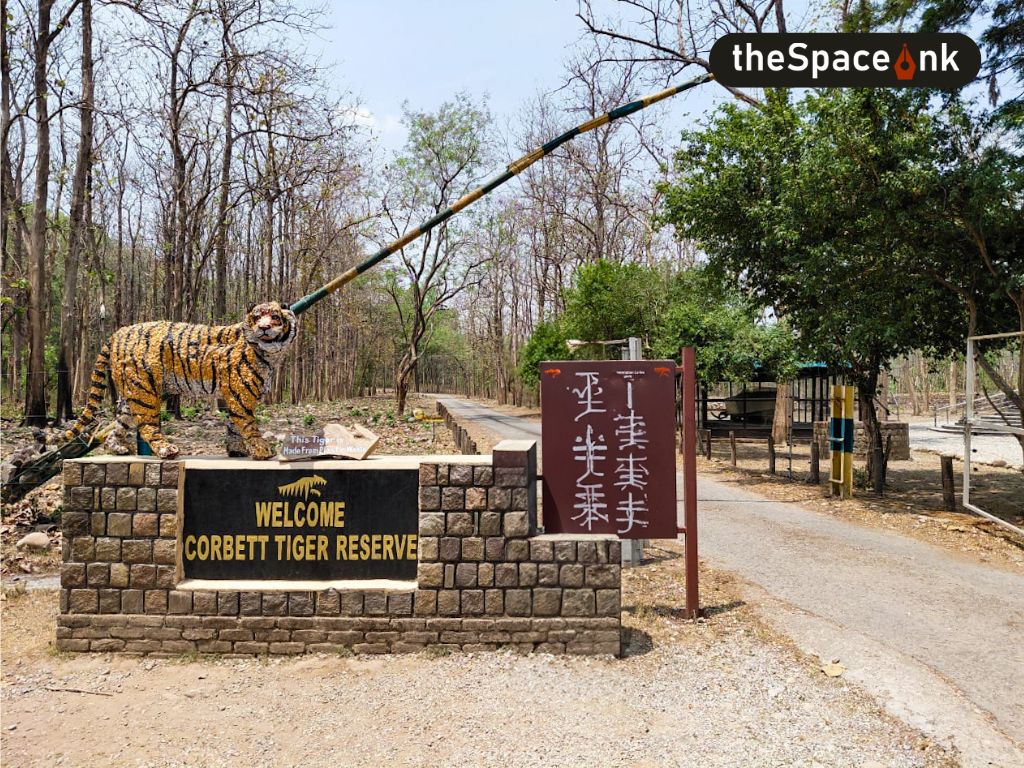
One Response
I always look forward to your posts—they never disappoint.